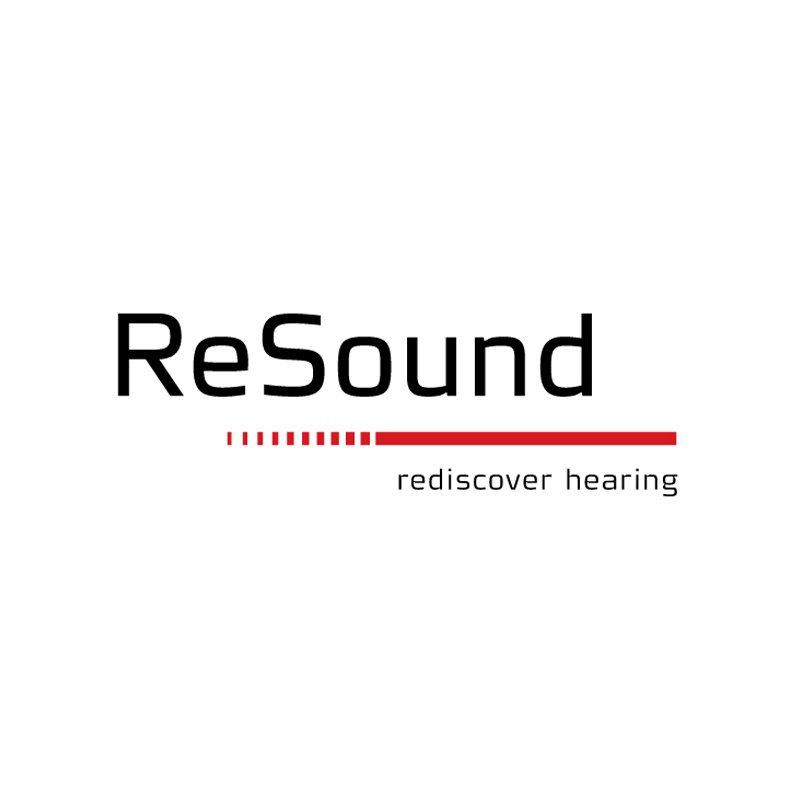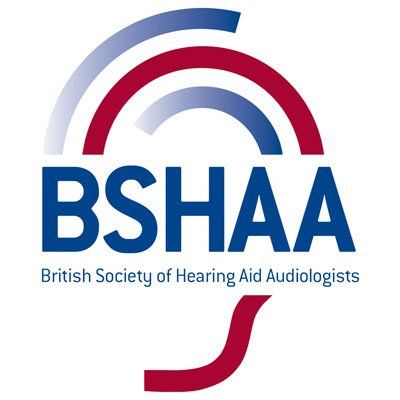WHAT IS A HEARING AID?
WHAT IS A HEARING AID?
A hearing aid is a small electronic device that you wear in or behind your ear. It makes some sounds louder so that a person with hearing loss can listen, communicate, and participate more fully in daily activities. A hearing aid can help people hear more in both quiet and noisy situations. However, only about one out of five people who would benefit from a hearing aid actually uses one.
A hearing aid has three basic parts: a microphone, amplifier, and speaker. The hearing aid receives sound through a microphone, which converts the sound waves to electrical signals and sends them to an amplifier. The amplifier increases the power of the signals and then sends them to the ear through a speaker.
HOW CAN HEARING AIDS HELP?
Hearing aids are primarily useful in improving the hearing and speech comprehension of people who have hearing loss that results from damage to the small sensory cells in the inner ear, called hair cells. This type of hearing loss is called sensorineural hearing loss. The damage can occur as a result of disease, aging, or injury from noise or certain medicines.
A hearing aid magnifies sound vibrations entering the ear. Surviving hair cells detect the larger vibrations and convert them into neural signals that are passed along to the brain. The greater the damage to a person’s hair cells, the more severe the hearing loss, and the greater the hearing aid amplification needed to make up the difference. However, there are practical limits to the amount of amplification a hearing aid can provide. In addition, if the inner ear is too damaged, even large vibrations will not be converted into neural signals. In this situation, a hearing aid would be ineffective.
HOW CAN I FIND OUT IF I NEED A HEARING AID?
If you think you might have hearing loss and could benefit from a hearing aid, visit your independent audiologist. An audiologist is a hearing health professional who identifies and measures hearing loss and will perform a hearing test to assess the type and degree of loss.
MORE ABOUT THE TECHNOLOGY
Behind-the-ear (BTE) hearing aids consist of a hard plastic case worn behind the ear and connected to a plastic earmold that fits inside the outer ear. The electronic parts are held in the case behind the ear. Sound travels from the hearing aid through the earmold and into the ear. BTE aids are used by people of all ages for mild to profound hearing loss.A new kind of BTE aid is an open-fit hearing aid. Small, open-fit aids fit behind the ear completely, with only a narrow tube inserted into the ear canal, enabling the canal to remain open. For this reason, open-fit hearing aids may be a good choice for people who experience a buildup of earwax, since this type of aid is less likely to be damaged by such substances. In addition, some people may prefer the open-fit hearing aid because their perception of their voice does not sound “plugged up.”
In-the-ear (ITE) hearing aids fit completely inside the outer ear and are used for mild to severe hearing loss. The case holding the electronic components is made of hard plastic. Some ITE aids may have certain added features installed, such as a telecoil. A telecoil is a small magnetic coil that allows users to receive sound through the circuitry of the hearing aid, rather than through its microphone. This makes it easier to hear conversations over the telephone. A telecoil also helps people hear in public facilities that have installed special sound systems, called induction loop systems. Induction loop systems can be found in many churches, schools, airports, and auditoriums. ITE aids usually are not worn by young children because the casings need to be replaced often as the ear grows.
Canal aids fit into the ear canal and are available in two styles. The in-the-canal (ITC) hearing aid is made to fit the size and shape of a person’s ear canal. A completely-in-canal (CIC) hearing aid is nearly hidden in the ear canal. Both types are used for mild to moderately severe hearing loss.Because they are small, canal aids may be difficult for a person to adjust and remove. In addition, canal aids have less space available for batteries and additional devices, such as a telecoil. They usually are not recommended for young children or for people with severe to profound hearing loss because their reduced size limits their power and volume.
Do all hearing aids work the same way?
HEARING AIDS WORK DIFFERENTLY DEPENDING ON THE ELECTRONICS USED. THE TWO MAIN TYPES OF ELECTRONICS ARE ANALOG AND DIGITAL.
Analog aids convert sound waves into electrical signals, which are amplified. Analog/adjustable hearing aids are custom built to meet the needs of each user. The aid is programmed by the manufacturer according to the specifications recommended by your audiologist. Analog/programmable hearing aids have more than one program or setting. An audiologist can program the aid using a computer, and you can change the program for different listening environments—from a small, quiet room to a crowded restaurant to large, open areas, such as a theater or stadium. Analog/programmable circuitry can be used in all types of hearing aids. Analog aids usually are less expensive than digital aids.
Digital aids convert sound waves into numerical codes, similar to the binary code of a computer, before amplifying them. Because the code also includes information about a sound’s pitch or loudness, the aid can be specially programmed to amplify some frequencies more than others. Digital circuitry gives an audiologist more flexibility in adjusting the aid to a user’s needs and to certain listening environments. These aids also can be programmed to focus on sounds coming from a specific direction. Digital circuitry can be used in all types of hearing aids.
WHICH HEARING AID WILL WORK BEST FOR ME?
The hearing aid that will work best for you depends on the kind and severity of your hearing loss. If you have a hearing loss in both of your ears, two hearing aids are generally recommended because two aids provide a more natural signal to the brain. Hearing in both ears also will help you understand speech and locate where the sound is coming from.
You and your audiologist should select a hearing aid that best suits your needs and lifestyle. Price is also a key consideration because hearing aids range from hundreds to several thousand pounds. Similar to other equipment purchases, style and features affect cost. However, don’t use price alone to determine the best hearing aid for you. Just because one hearing aid is more expensive than another does not necessarily mean that it will better suit your needs.
A hearing aid will not restore your normal hearing. With practice, however, a hearing aid will increase your awareness of sounds and their sources. You will want to wear your hearing aid regularly, so select one that is convenient and easy for you to use. Other features to consider include parts or services covered by the warranty, estimated schedule and costs for maintenance and repair, options and upgrade opportunities, and the hearing aid company’s reputation for quality and customer service.
WHAT QUESTIONS SHOULD I ASK BEFORE BUYING A HEARING AID?
Before you buy a hearing aid, ask your audiologist these important questions:
What features would be most useful to me?
What is the total cost of the hearing aid? Do the benefits of newer technologies outweigh the higher costs?
Is there a trial period to test the hearing aids? (Most manufacturers allow a 30- to 60-day trial period during which aids can be returned for a refund.)
What fees are nonrefundable if the aids are returned after the trial period?
How long is the warranty? Can it be extended? Does the warranty cover future maintenance and repairs?
Can the audiologist make adjustments and provide servicing and minor repairs? Will loaner aids be provided when repairs are needed?
What instruction does the audiologist provide?
How can I adjust to my hearing aid?
HEARING AIDS TAKE TIME AND PATIENCE TO USE SUCCESSFULLY. WEARING YOUR AIDS REGULARLY WILL HELP YOU ADJUST TO THEM.
Become familiar with your hearing aid’s features. With your audiologist present, practice putting in and taking out the aid, cleaning it, identifying right and left aids, and replacing the batteries. Ask how to test it in listening environments where you have problems with hearing. Learn to adjust the aid’s volume and to program it for sounds that are too loud or too soft. Work with your audiologist until you are comfortable and satisfied.
YOU MAY EXPERIENCE SOME OF THE FOLLOWING PROBLEMS AS YOU ADJUST TO WEARING YOUR NEW AID:
My hearing aid feels uncomfortable. Some individuals may find a hearing aid to be slightly uncomfortable at first. Ask your audiologist how long you should wear your hearing aid while you are adjusting to it.
My voice sounds too loud. The “plugged-up” sensation that causes a hearing aid user’s voice to sound louder inside the head is called the occlusion effect, and it is very common for new hearing aid users. Check with your audiologist to see if a correction is possible. Most individuals get used to this effect over time.
I get feedback from my hearing aid. A whistling sound can be caused by a hearing aid that does not fit or work well or is clogged by earwax or fluid. See your audiologist for adjustments.
I hear background noise. A hearing aid does not completely separate the sounds you want to hear from the ones you do not want to hear. Sometimes, however, the hearing aid may need to be adjusted. Talk with your audiologist.
I hear a buzzing sound when I use my cell phone. Some people who wear hearing aids or have implanted hearing devices experience problems with the radio frequency interference caused by digital cell phones. Both hearing aids and cell phones are improving, however, so these problems are occurring less often. When you are being fitted for a new hearing aid, take your cell phone with you to see if it will work well with the aid.
How can I care for my hearing aid?
PROPER MAINTENANCE AND CARE WILL EXTEND THE LIFE OF YOUR HEARING AID. MAKE IT A HABIT TO:
Keep hearing aids away from heat and moisture.
Clean hearing aids as instructed. Earwax and ear drainage can damage a hearing aid.
Avoid using hairspray or other hair care products while wearing hearing aids.
Turn off hearing aids when they are not in use.
Replace dead batteries immediately.
Keep replacement batteries and small aids away from children and pets.
Are new types of aids available?
Although they work differently than the hearing aids described above, implantable hearing aids are designed to help increase the transmission of sound vibrations entering the inner ear. A middle ear implant (MEI) is a small device attached to one of the bones of the middle ear. Rather than amplifying the sound traveling to the eardrum, an MEI moves these bones directly. Both techniques have the net result of strengthening sound vibrations entering the inner ear so that they can be detected by individuals with sensorineural hearing loss.
A bone-anchored hearing aid (BAHA) is a small device that attaches to the bone behind the ear. The device transmits sound vibrations directly to the inner ear through the skull, bypassing the middle ear. BAHAs are generally used by individuals with middle ear problems or deafness in one ear. Because surgery is required to implant either of these devices, many hearing specialists feel that the benefits may not outweigh the risks.
WHAT RESEARCH IS BEING DONE ON HEARING AIDS?
Researchers are looking at ways to apply new signal processing strategies to the design of hearing aids. Signal processing is the method used to modify normal sound waves into amplified sound that is the best possible match to the remaining hearing for a hearing aid user. NIDCD-funded researchers also are studying how hearing aids can enhance speech signals to improve understanding.
In addition, researchers are investigating the use of computer-aided technology to design and manufacture better hearing aids. Researchers also are seeking ways to improve sound transmission and to reduce noise interference, feedback, and the occlusion effect. Additional studies focus on the best ways to select and fit hearing aids in children and other groups whose hearing ability is hard to test.
Another promising research focus is to use lessons learned from animal models to design better microphones for hearing aids. NIDCD-supported scientists are studying the tiny fly Ormia ochracea because its ear structure allows the fly to determine the source of a sound easily. Scientists are using the fly’s ear structure as a model for designing miniature directional microphones for hearing aids.
These microphones amplify the sound coming from a particular direction (usually the direction a person is facing), but not the sounds that arrive from other directions. Directional microphones hold great promise for making it easier for people to hear a single conversation, even when surrounded by other noises and voices.
DO ALL HEARING AIDS WORK THE SAME WAY?
Hearing aids work differently depending on the electronics used. The two main types of electronics are analog and digital.
Analog aids convert sound waves into electrical signals, which are amplified. Analog/adjustable hearing aids are custom built to meet the needs of each user. The aid is programmed by the manufacturer according to the specifications recommended by your audiologist. Analog/programmable hearing aids have more than one program or setting. An audiologist can program the aid using a computer, and you can change the program for different listening environments—from a small, quiet room to a crowded restaurant to large, open areas, such as a theater or stadium. Analog/programmable circuitry can be used in all types of hearing aids. Analog aids usually are less expensive than digital aids.
Digital aids convert sound waves into numerical codes, similar to the binary code of a computer, before amplifying them. Because the code also includes information about a sound’s pitch or loudness, the aid can be specially programmed to amplify some frequencies more than others. Digital circuitry gives an audiologist more flexibility in adjusting the aid to a user’s needs and to certain listening environments. These aids also can be programmed to focus on sounds coming from a specific direction. Digital circuitry can be used in all types of hearing aids.
Recover your hearing in no time
At Listen Hearing Care Limited, we have a team of experienced audiologists, who are always on hand to help evaluate any hearing loss you may be experiencing and can recommend the best course of action. If left untreated, as time progresses, your condition will only get worse. So, take advantage of our free check-up to determine the severity of your situation. Based on your requirements, we can suggest the ideal hearing aid that can offer relief. For more information, contact us today.
TYPES OF HEARING AIDS
Behind-the-ear (BTE)
Behind-the-ear (BTE) hearing aids consist of a hard plastic case worn behind the ear and connected to a plastic earmold that fits inside the outer ear. The electronic parts are held in the case behind the ear. Sound travels from the hearing aid through the earmold and into the ear. BTE aids are used by people of all ages for mild to profound hearing loss.A new kind of BTE aid is an open-fit hearing aid. Small, open-fit aids fit behind the ear completely, with only a narrow tube inserted into the ear canal, enabling the canal to remain open. For this reason, open-fit hearing aids may be a good choice for people who experience a buildup of earwax, since this type of aid is less likely to be damaged by such substances. In addition, some people may prefer the open-fit hearing aid because their perception.
In-the-ear (ITE)
In-the-ear (ITE) hearing aids fit completely inside the outer ear and are used for mild to severe hearing loss. The case holding the electronic components is made of hard plastic. Some ITE aids may have certain added features installed, such as a telecoil. A telecoil is a small magnetic coil that allows users to receive sound through the circuitry of the hearing aid, rather than through its microphone. This makes it easier to hear conversations over the telephone. A telecoil also helps people hear in public facilities that have installed special sound systems, called induction loop systems. Induction loop systems can be found in many churches, schools, airports, and auditoriums. ITE aids usually are not worn by young children because the casings need to be replaced often as the ear grows.
In-the-canal (ITC)
Canal aids fit into the ear canal and are available in two styles. The in-the-canal (ITC) hearing aid is made to fit the size and shape of a person’s ear canal. A completely-in-canal (CIC) hearing aid is nearly hidden in the ear canal. Both types are used for mild to moderately severe hearing loss.Because they are small, canal aids may be difficult for a person to adjust and remove. In addition, canal aids have less space available for batteries and additional devices, such as a telecoil. They usually are not recommended for young children or for people with severe to profound hearing loss because their reduced size limits their power and volume.









